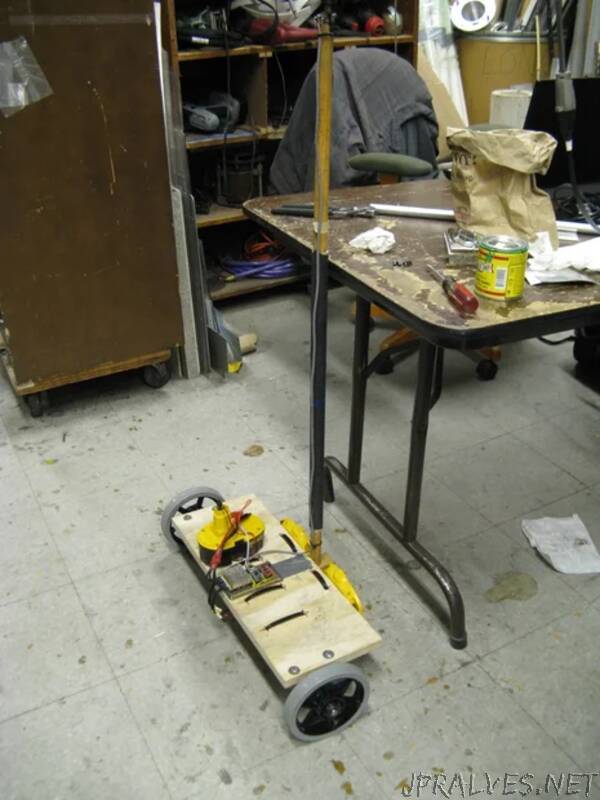
“Do-it-yourself self-balancing…things…have been around almost as long as commercial self-balancing things. Obviously the homemade versions are not as smooth, reliable, or failsafe as the real thing, but they are still pretty captivating. And they make great mechanical/electrical builds with some interesting control theory mixed in. In the final step, I provide a few references to good DIY self-balancing…whatever…builds.
In 2007, I helped with this other self-balancing scooter build at the MIT Edgerton Center, and since then we’ve gotten many interesting questions by email about how it works. Baseline self-balancing functionality is actually surprisingly simple, and maybe the purpose of this Instructable is to take this simplicity to the extreme. To that end, I present: Seg…stick.
Segstick is a self-balancing…well, literally some kind of broomstick I found in the MITERS workshop. It is powered directly by two DeWalt cordless drills chucked to two 6” wheels. The controller is an Arduino. Additional supporting devices include an Inertial Measurement Unit (IMU) from Sparkfun and two motor drivers from Pololu.
Is it the best DIY self-balancing vehicle ever? No, not even close. But it only took about two days to build, and it is stripped down to the bare necessities. Thus, I hope to point out the modules and concepts involved in making any self-balancing vehicle rather than the specifics of this one. To start with, some physics…”
